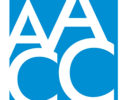Report roundup
By AACC 21st Century Center Staff
September 19, 2017
A monthly roundup of reports of interest to the community college sector.
Here are the reports you should know about this month.
- Several reports came out recently about transfer. A U.S. Government Accountability Office (GAO) report finds that community college students lose a substantial amount of credits when transferring to a four- or two-year institution. Overall, transfer students among all postsecondary institutions lost an estimated average of 43 percent of credits. Why? It’s due in part to poor coordination among the participating colleges and an inability to effectively communicate the transfer process and policies to students, according to the report. In California, transferring from a community colleges to one of the state’s public four-year systems is so complex and cumbersome that it’s costing students time and money — and it also can have an effect on the state’s economy, according to a new report from the state. Nationally, fewer community college students are transferring to four-year colleges and universities. That’s according to a National Student Clearinghouse (NSC) Research Center report, which finds that 31.5 percent of a fall 2010 cohort transferred to a four-year institution within six years, down from 33 percent for the fall 2007 cohort.
- A new report from the Center for American Progress calls for institutional leaders, researchers and policymakers to better serve part-time college students. More than 60 percent of part-time undergraduates are enrolled at two-year colleges, and this number may be growing. Tracking of these students is difficult, but data suggest they have “at best a 50-50 shot of even being there a year later, let alone graduating.” The report’s author concludes that, “When it comes to the conversation about equity and student success in higher education, part-time students cannot stay at the margins.”
- College and career readiness suffers for underserved high school students, according to ACT’s annual score report. Of the U.S. high school graduates who took the ACT test in 2017, nearly half were the first generation in their family to attend college, come from low-income families and/or self-identify their race/ethnicity as minority. Only 9 percent of ACT-tested students who possessed all three characteristics showed strong readiness for college coursework. There are four benchmarks in the ACT test: science, math, reading and English. “Less than a fourth of graduates who qualify as underserved met or surpassed three or four of the ACT College Readiness Benchmarks, compared to more than half of ACT-tested graduates who are not underserved,” the report’s authors found.



